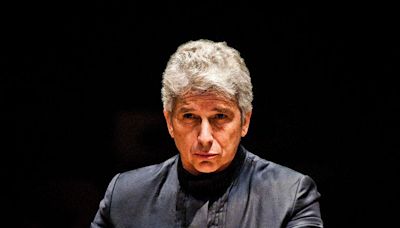Search results
The Ninth Symphony
- The Ninth Symphony was Beethoven’s last work for large-scale forces. His final commission came in 1823 from Knyaz (prince) Nikolas Golitsyn, who offered 50 ducats each for three string quartets. Beethoven accepted with alacrity, though only in 1825 was the first of the three, the String Quartet in E-flat Major, Opus 127, completed.
www.britannica.com › biography › Ludwig-van-BeethovenLudwig van Beethoven - Composer, Symphony, Death | Britannica
People also ask
What was Beethoven's Final Symphony?
What was Beethoven's last work?
What symphony did Ludwig van Beethoven write?
When did Beethoven start studying music?
The Ninth Symphony was Beethoven’s last work for large-scale forces. His final commission came in 1823 from Knyaz (prince) Nikolas Golitsyn, who offered 50 ducats each for three string quartets . Beethoven accepted with alacrity , though only in 1825 was the first of the three, the String Quartet in E-flat Major , Opus 127, completed.
Performance challenges. Notable performances and recordings. Influence. References. Further reading. External links. Symphony No. 9 (Beethoven) The Symphony No. 9 in D minor, Op. 125, is a choral symphony, the final complete symphony by Ludwig van Beethoven, composed between 1822 and 1824. It was first performed in Vienna on 7 May 1824.
- 1822–1824
- Four
- German
Nov 17, 2020 · November 17, 2020 | History, Humanities. Laura Tunbridge— In 1840, the Berlin publisher Heinrich Schlesinger published a short piano piece as the Dernière pensée musicale de Louis van Beethoven. It was not, in fact, Beethoven’s “last musical thought”; it was not even the first time it had been published.
Beethoven's late period began in the decade 1810-1819. He began a renewed study of older music, including works by Palestrina, Johann Sebastian Bach, and George Frideric Handel, whom Beethoven considered "the greatest composer who ever lived". Beethoven's late works incorporated polyphony and Baroque-era devices.
Apr 30, 2021 · Musicologists often point out that Beethoven’s music was transitional—that is, it pointed the way from the high-Classical style of Mozart and Haydn toward the Romanticism of Mendelssohn and Chopin. In other words, Beethoven was at once the last of the Classicists and the first of the Romantics, yet somehow neither.

